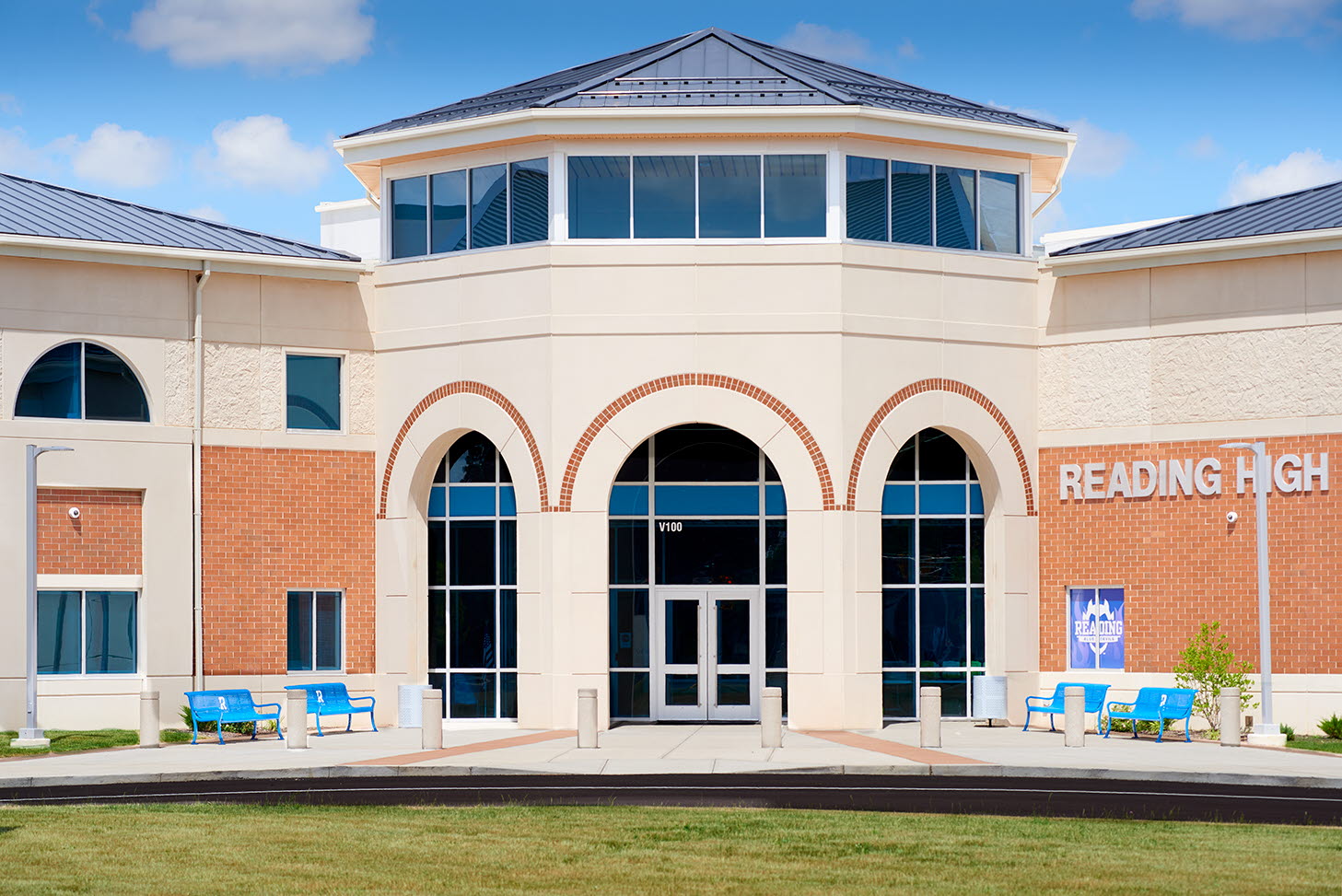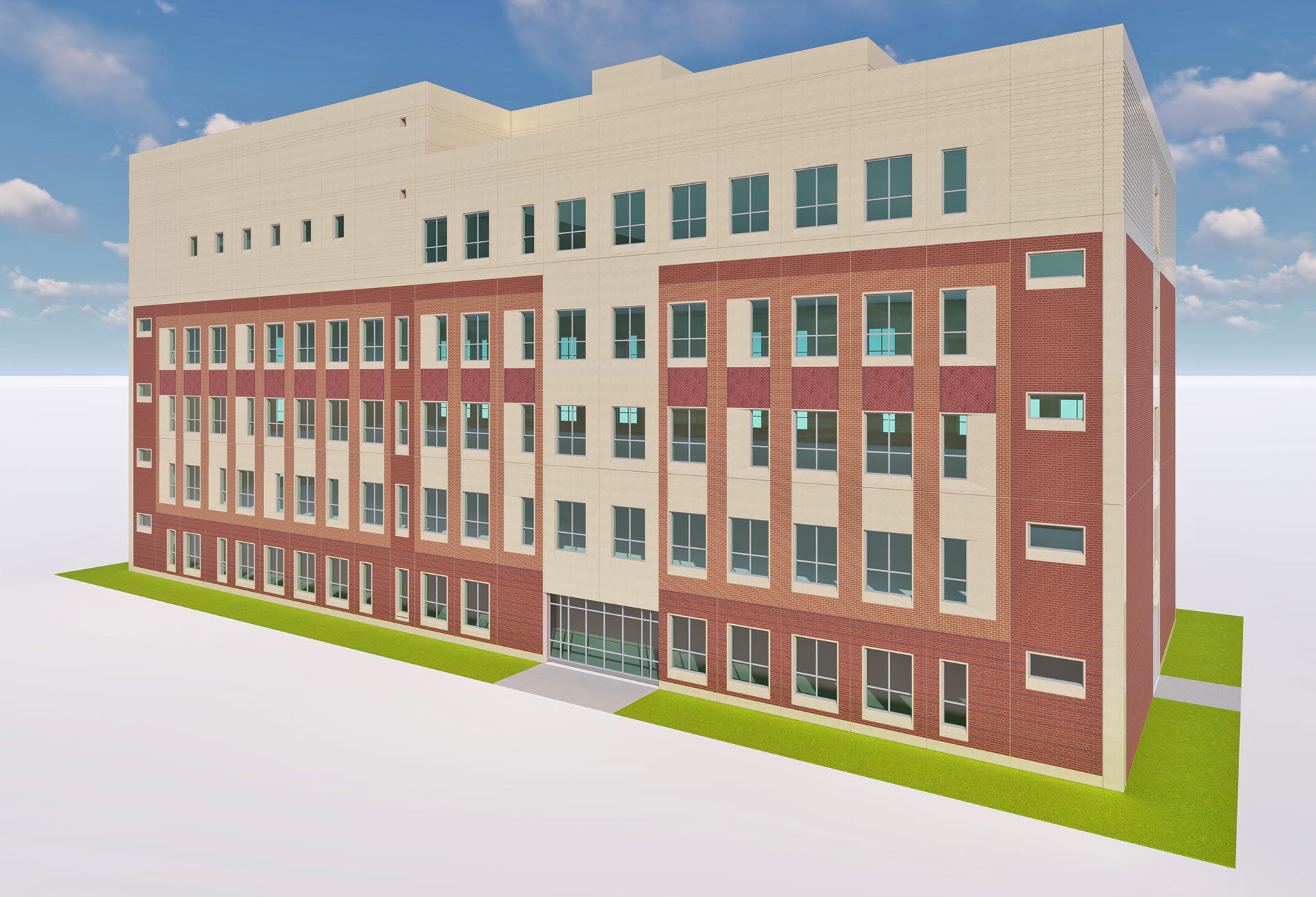Benefits of Precast Concrete Design

Building owners, designers, and contractors are constantly looking for materials that can improve a project's efficiency, durability, and aesthetics. Precast concrete is a versatile and innovative solution that provides a wide range of benefits for modern construction.
Because it's manufactured in a controlled environment, precast concrete offers exceptional strength and sustainability, making it an ideal choice for a variety of projects. Continue reading to learn more about the various benefits of precast concrete design and how our team can help bring your vision to life.
Precast Concrete Design Innovation
1. Sustainability
One of the many benefits of precast concrete design is its contribution to sustainability. Precast concrete, often manufactured off-site in a controlled environment, is emerging as a powerful solution. Its unique properties and production methods allow it to contribute significantly to green building practices, offering a durable, efficient, and responsible alternative for a wide range of projects.
- Strong and Durable: Precast concrete is highly durable due to a lower water-cement ratio, which ensures structures last longer.
- Energy Efficient: The thermal mass of concrete can shift peak heating and cooling loads, which reduces the need for large mechanical systems and lowers energy consumption. Insulated precast panels also help improve energy efficiency.
- Less Waste: Being factory-made in a controlled environment means there is minimal waste at the plant and less job site debris.
- Adaptable: The load-carrying capacity and long spans of precast concrete allow for optimized designs that eliminate redundant structural members.
2. BIM
One of the most prominent benefits of precast concrete design innovation is the use of Building Information Modeling (BIM). This is a powerful tool for collaboration that allows all project stakeholders to visualize the entire job before construction starts. With a detailed BIM digital model, teams can see the building come to life and understand the physical and functional details.
The model integrates all trades, not just precast concrete, enabling each party to highlight their unique value and outline the scope of their work. Augmented Reality (AR) and Virtual Reality (VR) offer owners, designers, and construction teams a new level of collaboration, including:
- Visualizing the project: Walk through the site at true scale before any physical work begins.
- Spotting errors early: Identify design flaws and make corrections before they become costly problems on-site.
- Improving the design: Easily test and approve changes that will enhance the final building.
- Aligning trades: Ensure different teams and their components—such as precast concrete, plumbing, and electrical—fit together perfectly, preventing conflicts during construction.
- Coordination: Continue clear communication and collaboration between team members and subcontractors throughout the process to ensure all phases are completed efficiently.
3. Modeling
Similarly, modeling is another benefit of precast concrete design innovation. Engaging our team early adds significant value to your project. By working with architects from the start, we can help prevent costly redesigns and eliminate the time and headaches that come from involving a facade company later in the process.
At High Concrete, we offer two valuable steps in the initial precast design phase—preconstruction design models and estimating models. These help bring your vision to life, ensuring your project is not only precast-friendly but also has an accurate price from the beginning.
Preconstruction Design Models
In the sales process, our preconstruction designers create models that help owners and architects transform their precast building design into an efficient structure. This approach promotes the use of standard products, which offer significant cost and production advantages.
Using the customer's information, the preconstruction designer builds a 3D model that clearly outlines precast elements and logistics. This allows architects and owners to visualize their project as a precast building, reduce lead times, and get a more accurate estimate of material costs.
Estimating Models
Every project estimate we provide includes a detailed 3D model that forms the basis for our cost analysis. Our estimators use contract drawings to create these models, ensuring we can generate an accurate and detailed count of every piece.
This model allows us to precisely determine all necessary materials, labor, and project sequencing, giving you a clear and accurate total cost and schedule. We use a semi-automated process to continually refine the model and provide a precise cost for each element.
If a preconstruction design model wasn't created beforehand, our estimators will also work with the architect to ensure the project is suitable for precast construction.

Precast Concrete Design Aesthetics
In addition to the advantages of innovation we mentioned above, there are also many benefits of precast design aesthetics. These elements offer an easy way to add visual depth and custom finishes to any project. We achieve color by combining white or gray cement with a variety of coloring agents and aggregates.
By varying the type, color, size, and exposure depth of the aggregates, we can create many different textures and colors. Additionally, we use liners made from materials like urethane, rubber, or even wood to cast unique finishes, textures, and patterns directly into the precast panel designs.
1. Colors & Pigments
The final look of concrete is all about the combination of its ingredients: aggregates (sand and small stones), cement, and coloring agents mixed with water. We can achieve a wide variety of colors and textures by adjusting the aggregate size and color, the pigments, the type of cement, and the finishing process.
The cement, along with pozzolans and sand, creates a matrix that surrounds the stone. This matrix can be colored with either sand or powdered pigments to match or contrast the stone. While gray cement is a cost-effective choice, white cement is often used for a lighter or more consistent color.
We can also use waste-byproduct pozzolans, such as fly ash or slag, to improve the concrete's properties and reduce the amount of cement needed. Most precast concrete designers can match the mixes shown in the Precast/Prestressed Concrete Institute's color and texture guide. However, because all materials are sourced regionally, the exact mix may vary slightly.
2. Finishes
By adjusting the amount of stone in our mix, we create compelling textures and finishes. These high-performance aesthetics in precast concrete can add a sense of depth, among other unique characteristics.
- As-Cast Finish: The natural surface left by the form, often smooth and uniform. commonly used on a project with a post-applied paint.
- Acid Etched: Using a high-pressure acid spray, we remove some of the outer cement and sand to expose the stone. This creates a uniform, textured surface featuring the matrix and stone colors. Washes can be adjusted from light to heavy, allowing the matrix color to dominate in a light wash or the stone to take over in a deep wash.
- Retarded - Exposed Aggregate: Created with a chemical retarder that prevents the surface cement from hardening, this method is excellent for exposing the most aggregate, resulting in a finish that is mostly stone. Retarded finishes can be light, medium, heavy, or fully exposed aggregate.
- Blasted: Using a high-pressure spray of sand or steel shot, we can remove the surface cement, creating a finish similar to acid etching. While this method can slightly dull the stone's appearance, it's effective for creating light, medium, or heavy textures.
Applied Veneer Finishes
Tile and Thin-Brick Veneers: These specially molded tiles lock directly into wet concrete, creating a durable bond. We can cast them into precast panel designs to achieve a clean or rustic look, and we offer a wide variety of colors, sizes, and textures.
Stone Veneers and Matching Finishes: Attaching natural stone veneers to precast panel designs, an efficient way to clad high-rise buildings. For cost savings, we often match natural stone on lower floors with custom precast on upper levels.
3. Formliners & Cast Patterns
These precast design aesthetics allow you to make every project a work of art by using custom cast patterns that give your building visual impact while reducing its overall mass.
Because precast concrete is a liquid when poured, it can be cast into almost any shape imaginable. This benefit of precast concrete design allows us to create custom relief sculptures and patterns directly into the surface of architectural panels.
We integrate color and texture directly into these precast mix designs for a seamless finish. Depending on the complexity of the design, we can either build the sculptural details directly into the form or use a custom formliner.
Formliners are made from materials like urethane, foam, plastic, and steel to cast unique textures into the concrete, including stone, brick, and ribs. For the most cost-effective solution, formliners can be designed for repeated use, either in full or in part, on multiple panels.

By embracing the versatility of precast concrete, builders, designers, and owners can unlock a wide range of benefits that go far beyond aesthetics. From faster construction timelines and reduced on-site labor to enhanced durability and significant cost savings over a project's life, precast concrete is a smart investment.
Ready to upgrade your building's design? Talk to one of our precast concrete designers to see how we can assist you on your next project.

